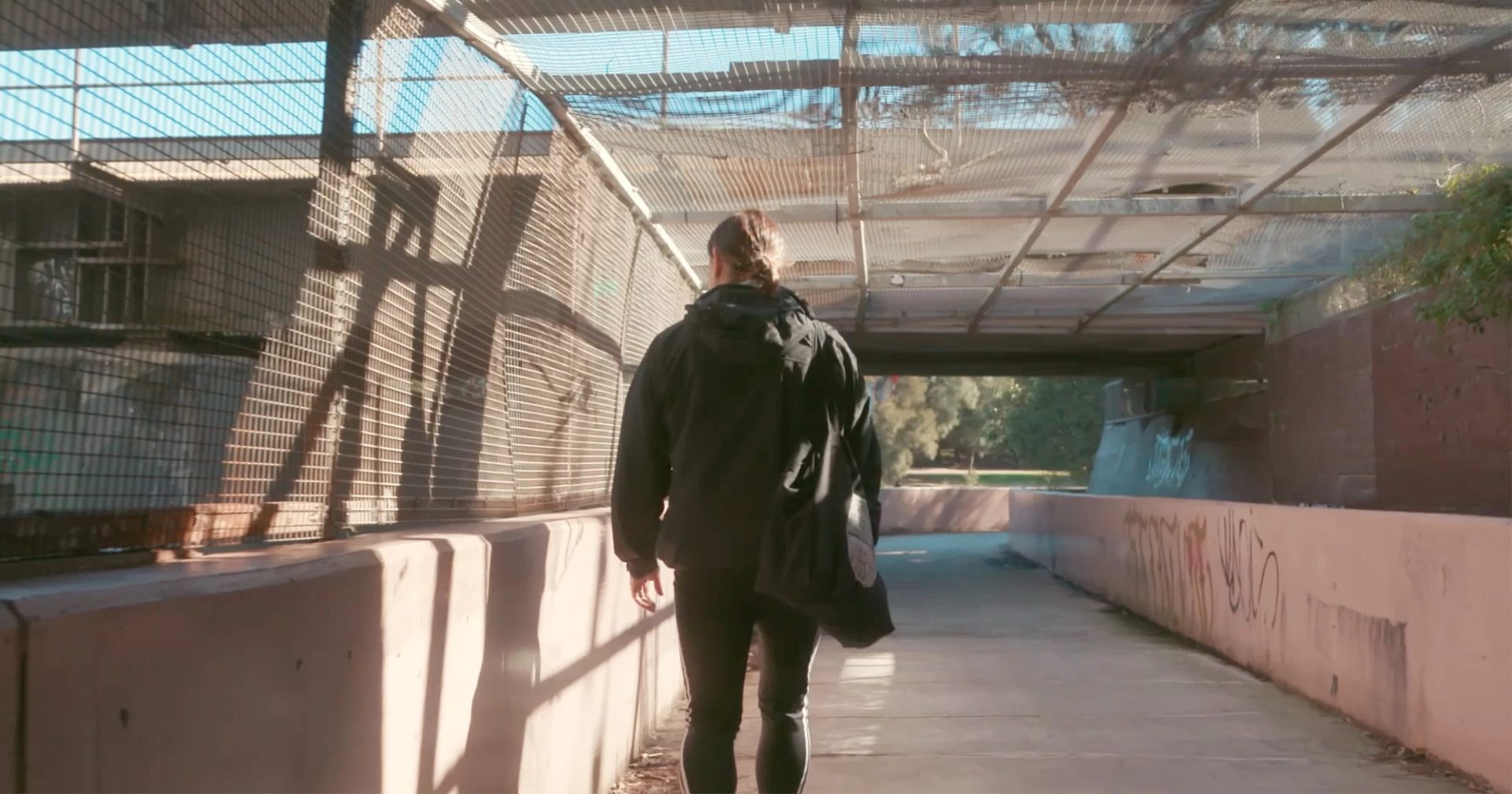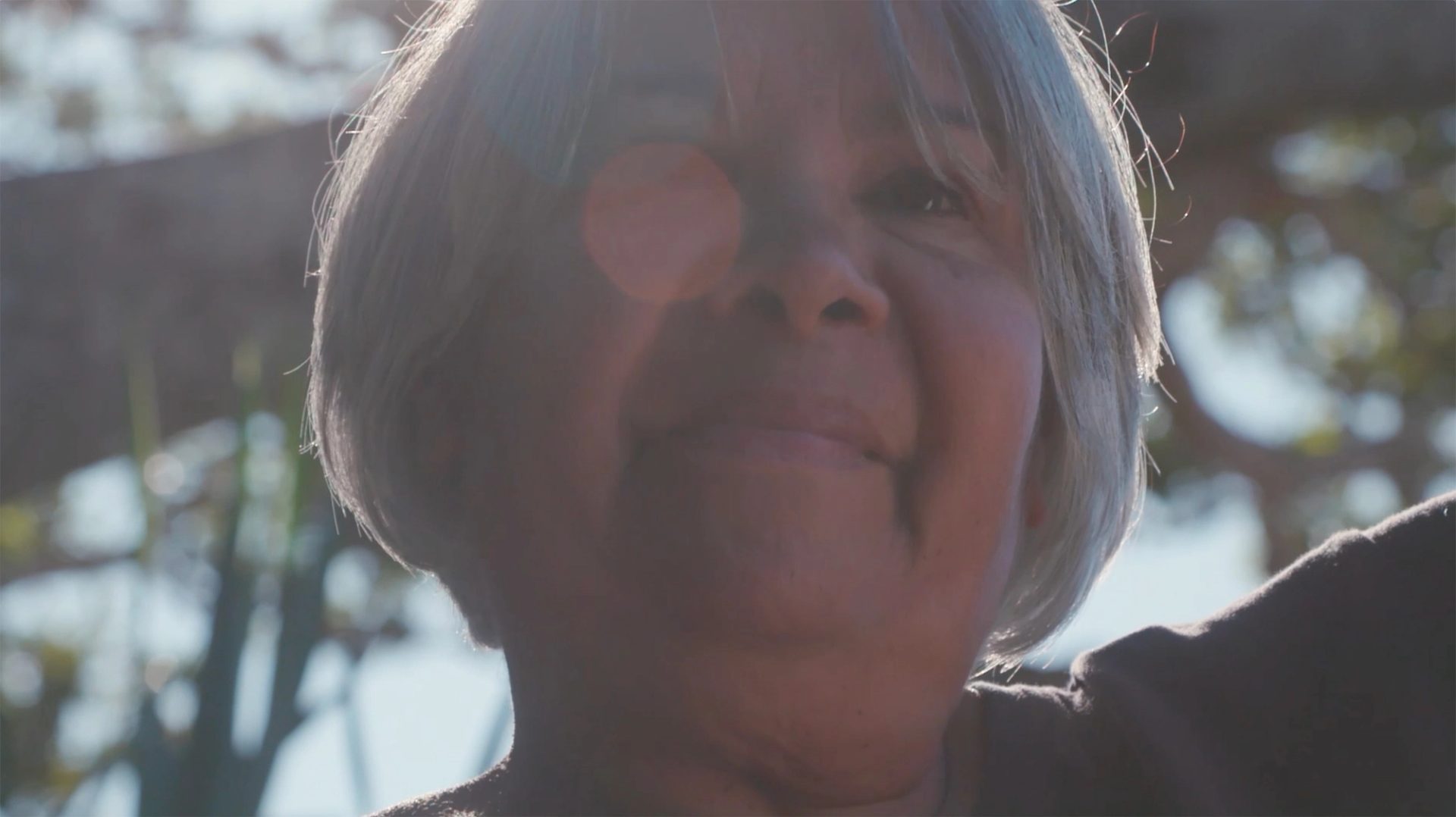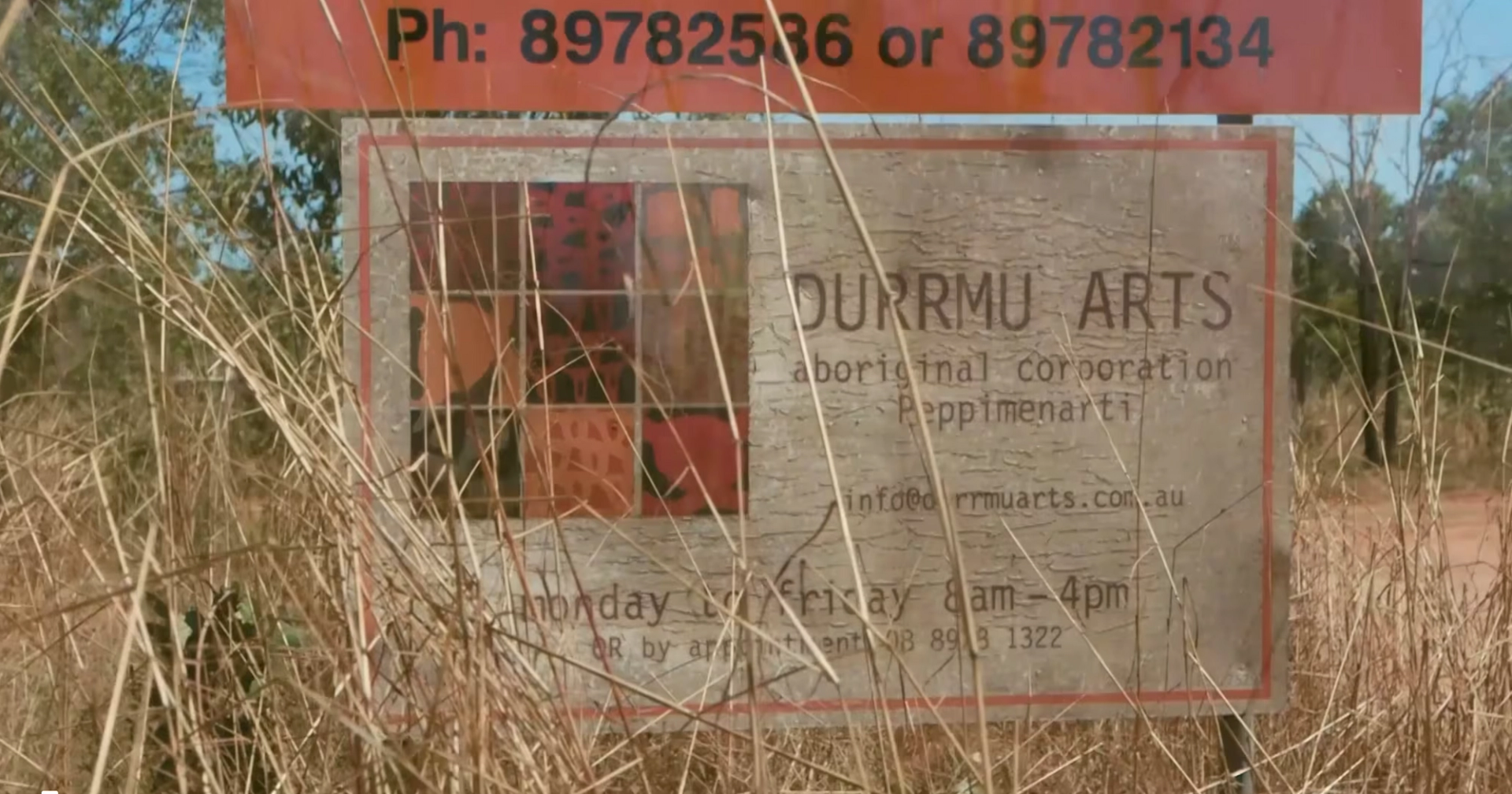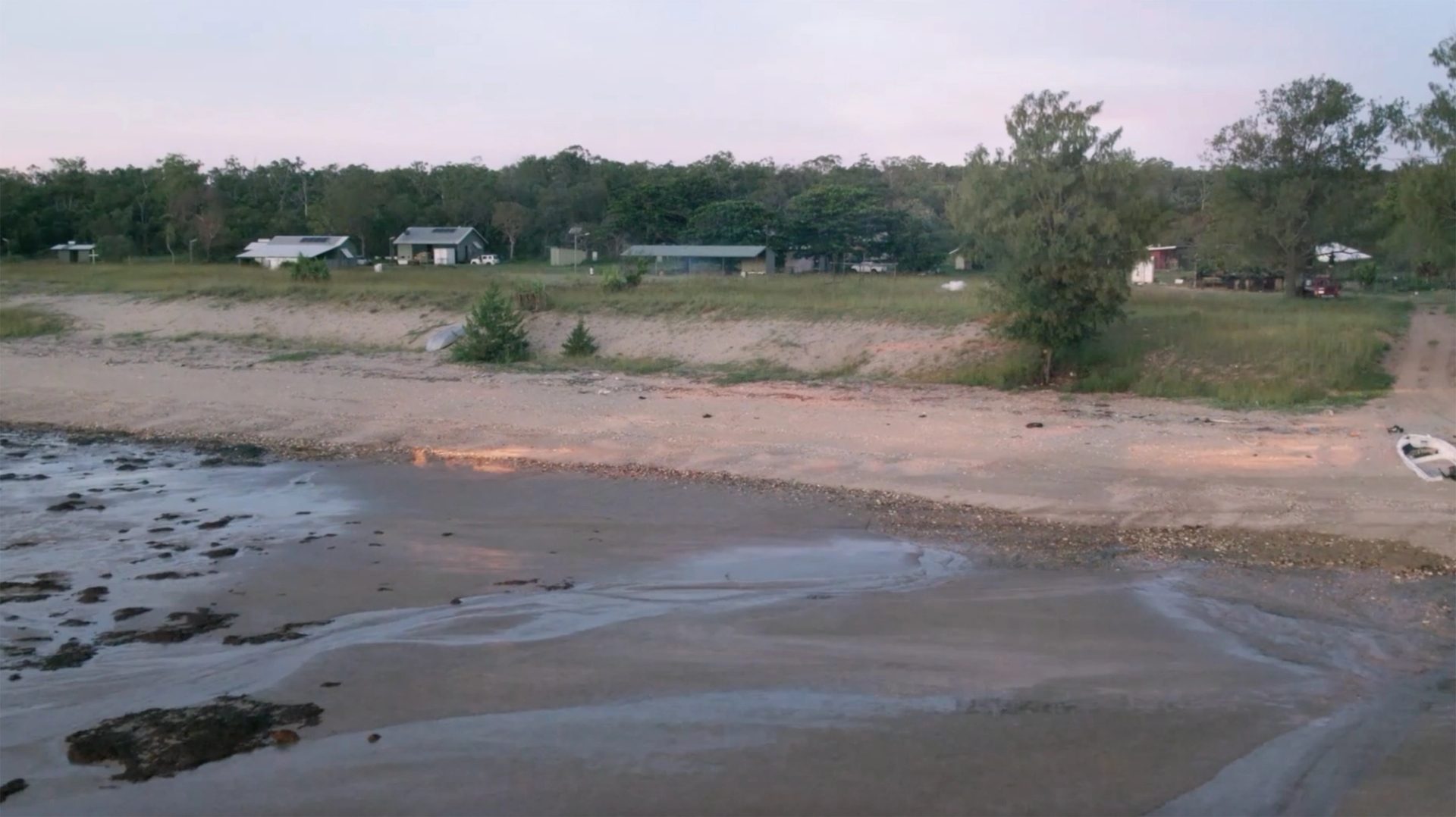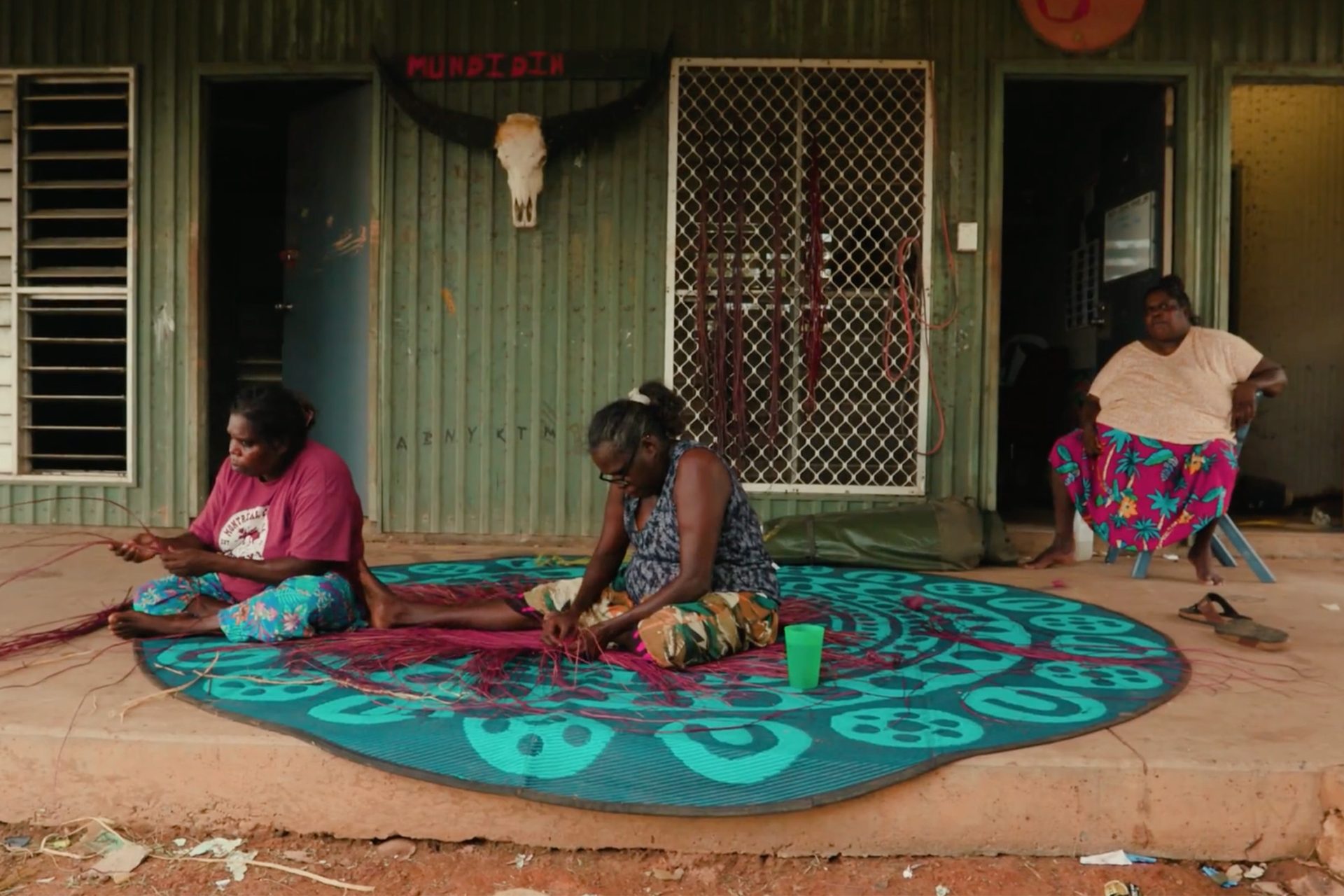Marrawuddi Arts and Culture

Coby Edgar reflects on her travels to Mamadewerre and Marrawuddi Arts and Culture with Tim Hillier and Miriam La Rosa, and time spent with artists on Country as they prepared for Alchemy.
‘Rosemary told me the stories of the marebu. The different patterns, weaves, stitches. She told me the story of her mother Janice Nabulwad starting the marebu and carting it to hospitals, on planes, to meetings and work. That marebu went everywhere with those women.’
Katie Hagebols, the Marrawuddi Arts and Culture centre manager, swung her 4WD into the Jabiru airport carpark with a beaming smile, furiously waving her hand in greeting. Miriam La Rosa from Agency, videographer Tim Hillier and I collectively sighed with relief, piled into the troopie and headed to our accommodation for the night. I weighed in again: 65 kg before this leg, 60 kg now. We’d spent seven hours that day stranded on Laŋarra Island, off the coast of Arnhem Land, waiting for missing airplane parts. We all showered off Laŋarra’s sand and dirt, a legacy that somehow managed to tan my skin a few shades darker, jumped back in the car and went to the local caravan park for a feed. We all ordered the wild-caught barramundi, chips and salad and a very cold and well-deserved beer. The barra was huge and delicious. I sent a picture to Mandi King, who’d been with us on the island but was now safely back in Milingimbi, to let her know we were alright too and on the next leg of our journey. She was outright jealous of the beer in hand. Most of the communities I travelled to are dry – no alcohol – so a beer, when it is available and it’s socially appropriate, is a nice way to end a long day. Especially after being stranded. Mandi went back to a dry community, so she didn’t get the stranded-and-saved beer that Tim, Miriam and I did. I ordered another one to have on her behalf.
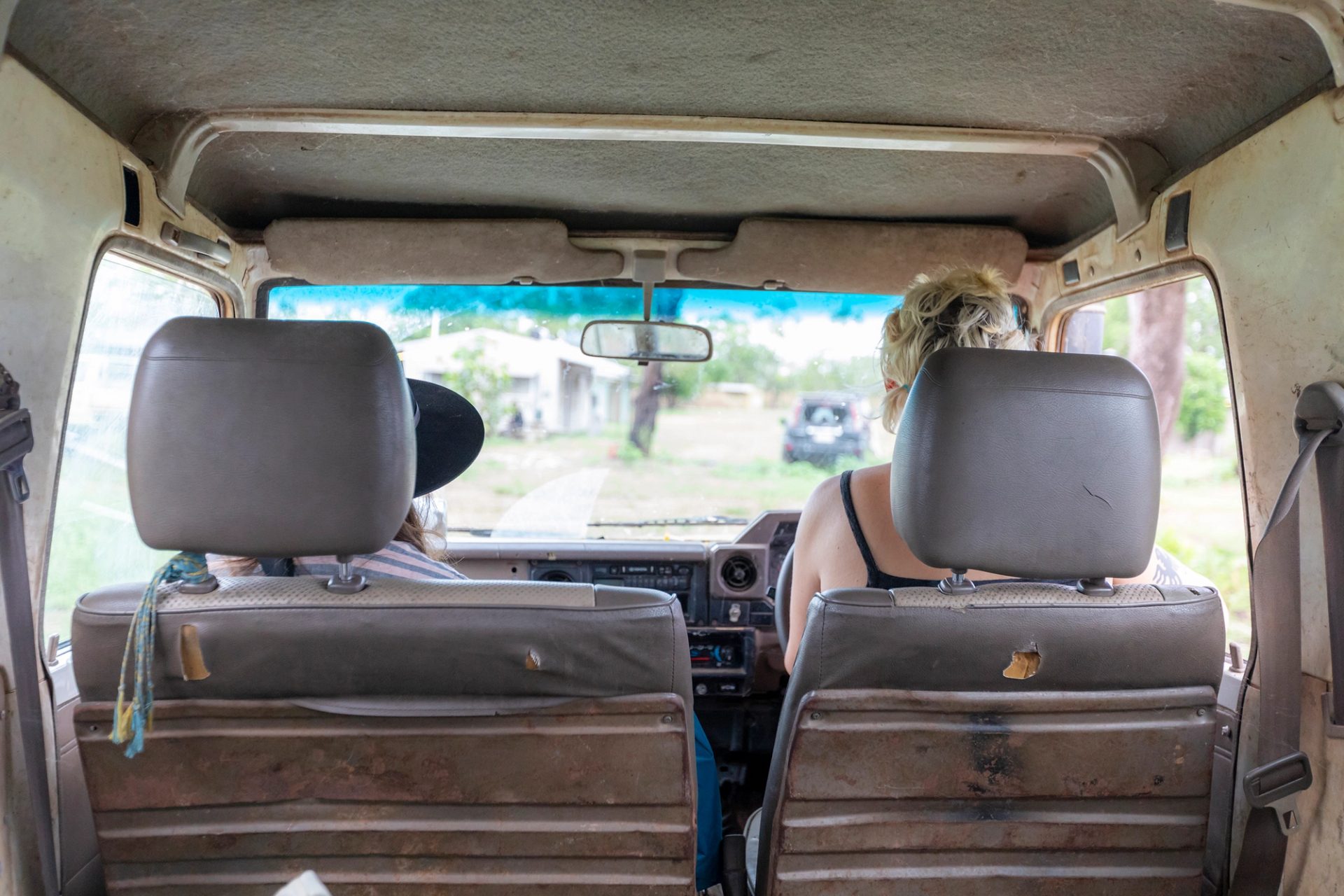
A good sleep and another ride in a tiny plane the next morning – to the outstation of Mamadawerre in West Arnhem. This plane was a bit more flash, with grey leather seats. We flew over rocky Country alive with moving water. There had been so much rain that a plane was the only way in and out of this community. Huge rock formations jutted out like highly decorative features found on gothic architecture in Europe, tall and stained. The rocky surfaces guide the streams to lower ground. Bursting across the cliff's threshold, the white water races to find somewhere to go underground, somewhere more porous. Somewhere deeper. As we approached Mamadawerre we saw a hill sitting in the middle of a flat green valley, surrounded by cascading waterfalls that would fill the wetlands, the veins of water reaching all the way to the ocean. Back to the oceans that hug Milingimbi and Laŋarra’s coastlines.

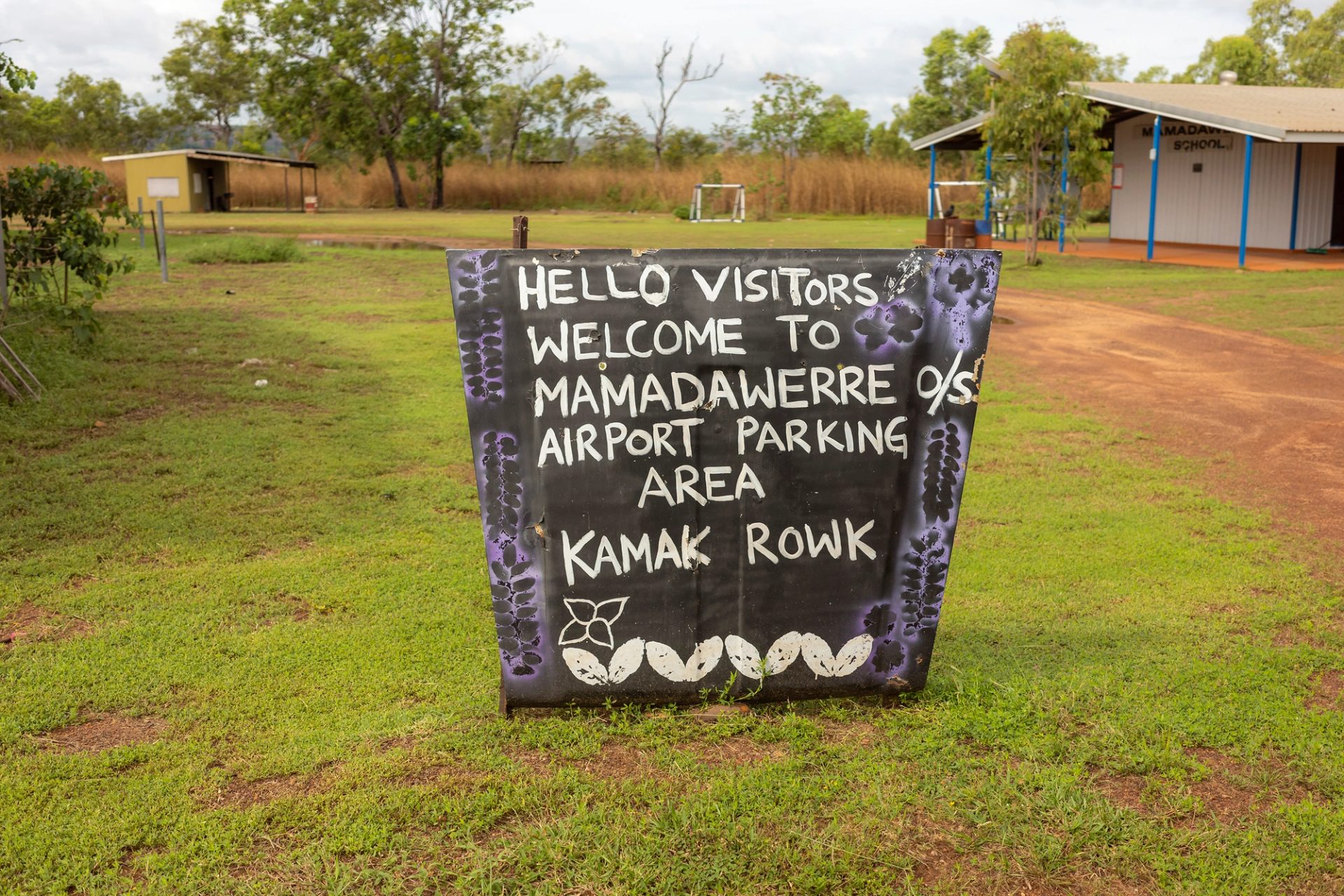
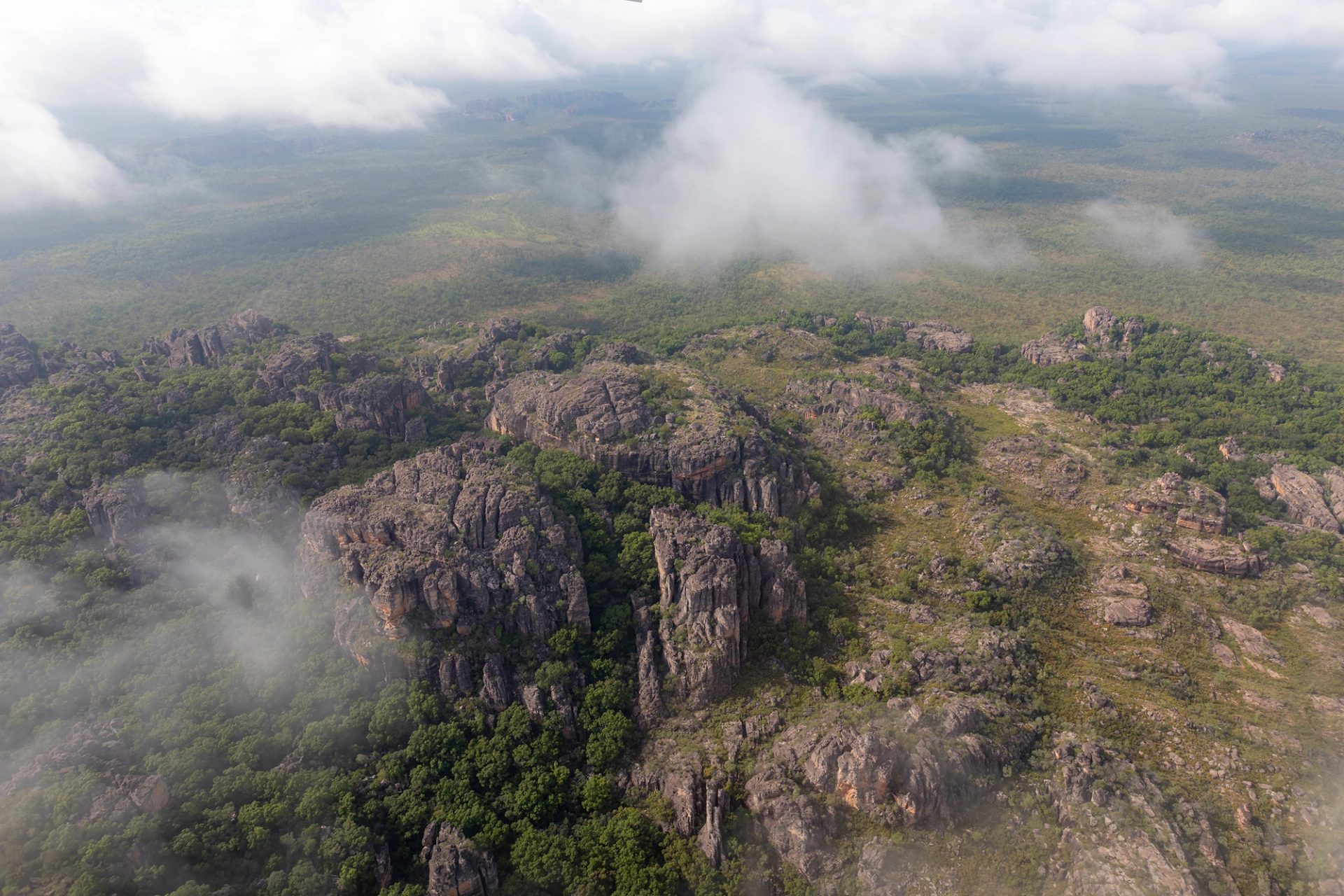
Rosemary Nabulwad, the eldest sister working on this project, greeted us at the airstrip. We would drop our things at our accommodation and then catch up with Rosemary and her two younger sisters, Ada and Lorna Nabulwad, at the rangers’ building. We were staying in a massive shed with netting around it to keep the mozzies out, a drop toilet, basic kitchen and four swags. Katie came prepared with this cool-looking remote that takes a tab and makes the mosquitoes stay away, as well as a rich curry for dinner with barramundi she had caught. She is immediately promoted to goddess of comfort in my mind, homemade food is the way to my heart and after Laŋarra I don't think I have spare skin for any more mozzies to bite. We quickly have a snack and then head to the rangers’ building where the women have been weaving on the concrete veranda. This outstation even has good wi-fi, a luxury.
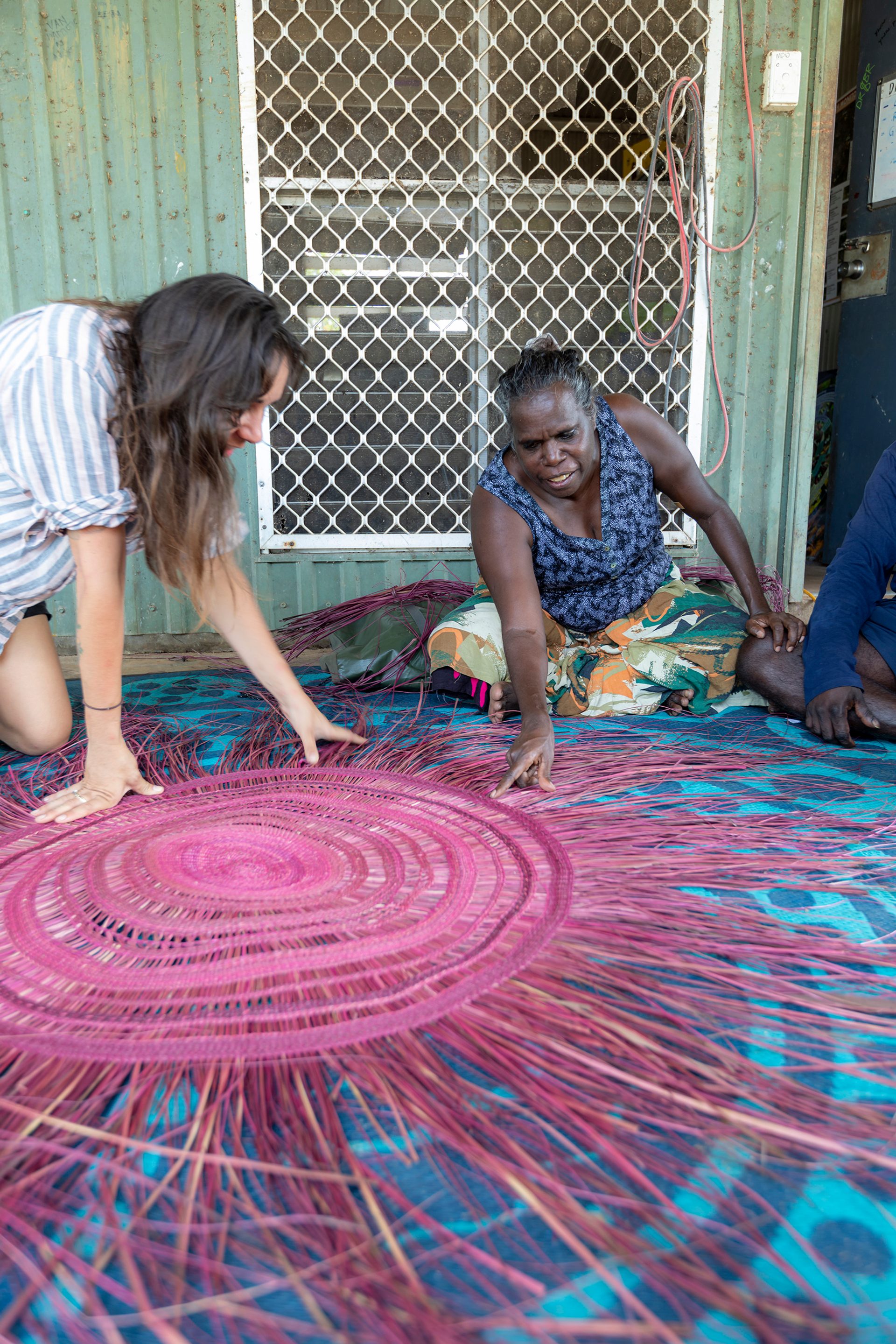
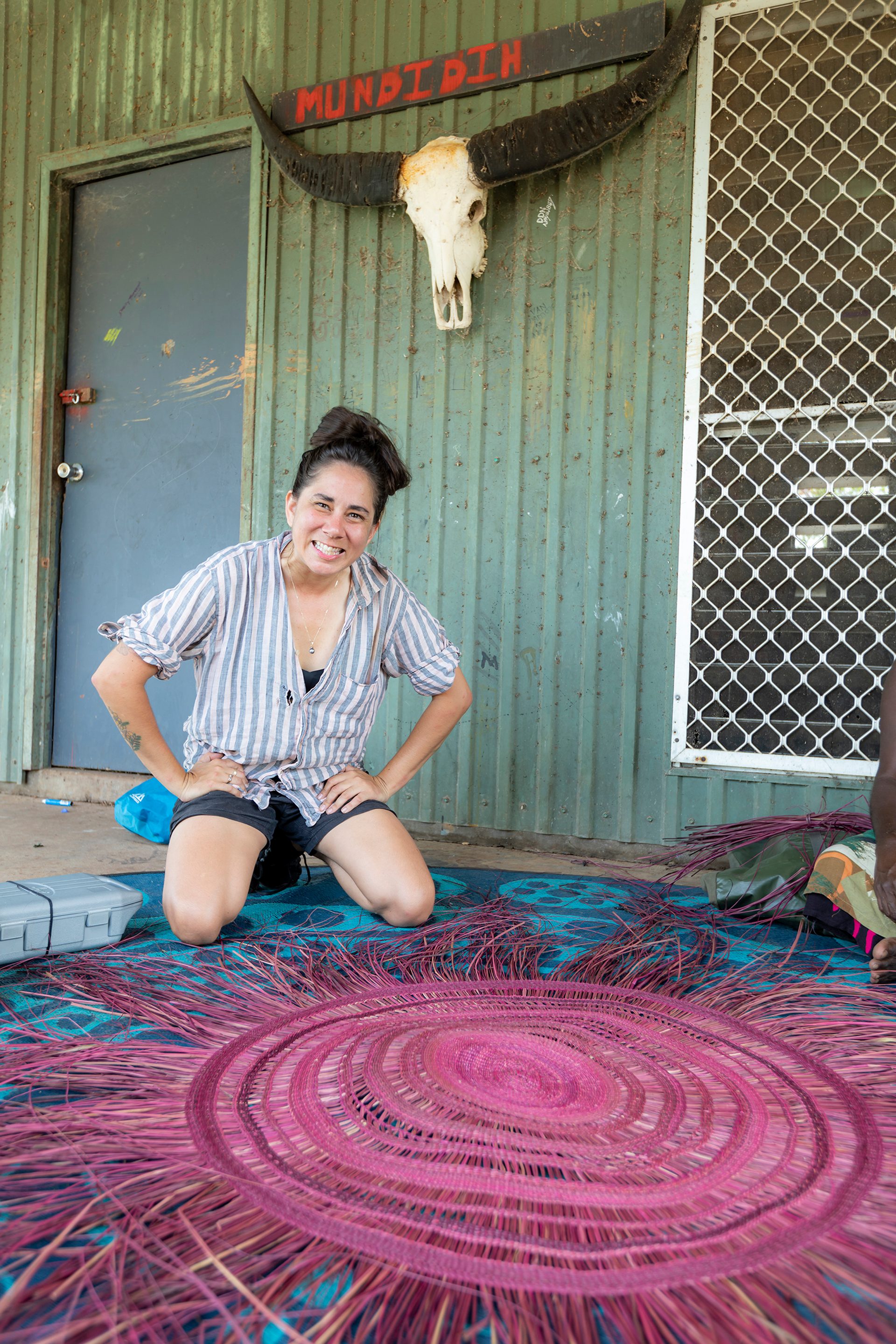
I jumped out of the 4WD and headed straight to the pink marebu (woven mat) sitting on a blue mat, drawn to it like the mozzies have been to me, Miriam and Tim this whole trip. It was stunning and already large in scale. The tonal variations of light pink to almost purple dyes make this piece absolutely vibrate with movement. I was overexcited by the sight of it. Rosemary and her husband Conrad Maralngurra were on the veranda. I sensed immediately that Conrad and I both possess the cheeky gene, the gene of the easily overexcited. Rosemary was lively and had a beautiful wide smile. She didn't seem like a hard woman, maybe sometimes firm, but very warm and clearly in charge that day. Her sisters Ada and Lorna were a little shy. Ada is a left hander, so it was nice to watch her weave because it's also the right way round for me. Her job is integral to the weave, she knows how to do one particular stitch the other sisters can't seem to master. The one where the fibres cross each other and create a pattern in that one section. Those sections make the work move when viewed from a distance. Ada laughed at me from her seat as she watched my exuberant reactions. It's hard to express the vitality of this particular community of people. Mamadawerre had been by far the most energetic community I had visited for this project.

The Mamadawerre community is small, with houses in hearing distance of someone who can project their voice. I know this because they would call out for things regularly and it wasn't just the one or two people like usual, it was the whole lot of them! It was nice being around a vocal bunch. Kids were yelling at the TV, offering their technical critiques to the footy players. Pass the ball! Holding! COME ON! That's holding! Of course, there were the questions directed to me about who I am and where I am from. My extended family happens to have a long and positive relationship with these mob, marrying and growing family here. They are part of this family and in turn I am treated as such. Conrad immediately took on the role of uncle, tour guide, educator. He showed me local plants and their uses, told me the history of the place. He made a piece of string during one of his demonstrations that I found the next morning – made into a necklace – and asked him if I could keep it. He said, ‘Of course, it’s your lucky charm now!’ I am still wearing it. Conrad should have a travel show like The Great Outdoors or Getaway, called Conrad’s Jabiru.
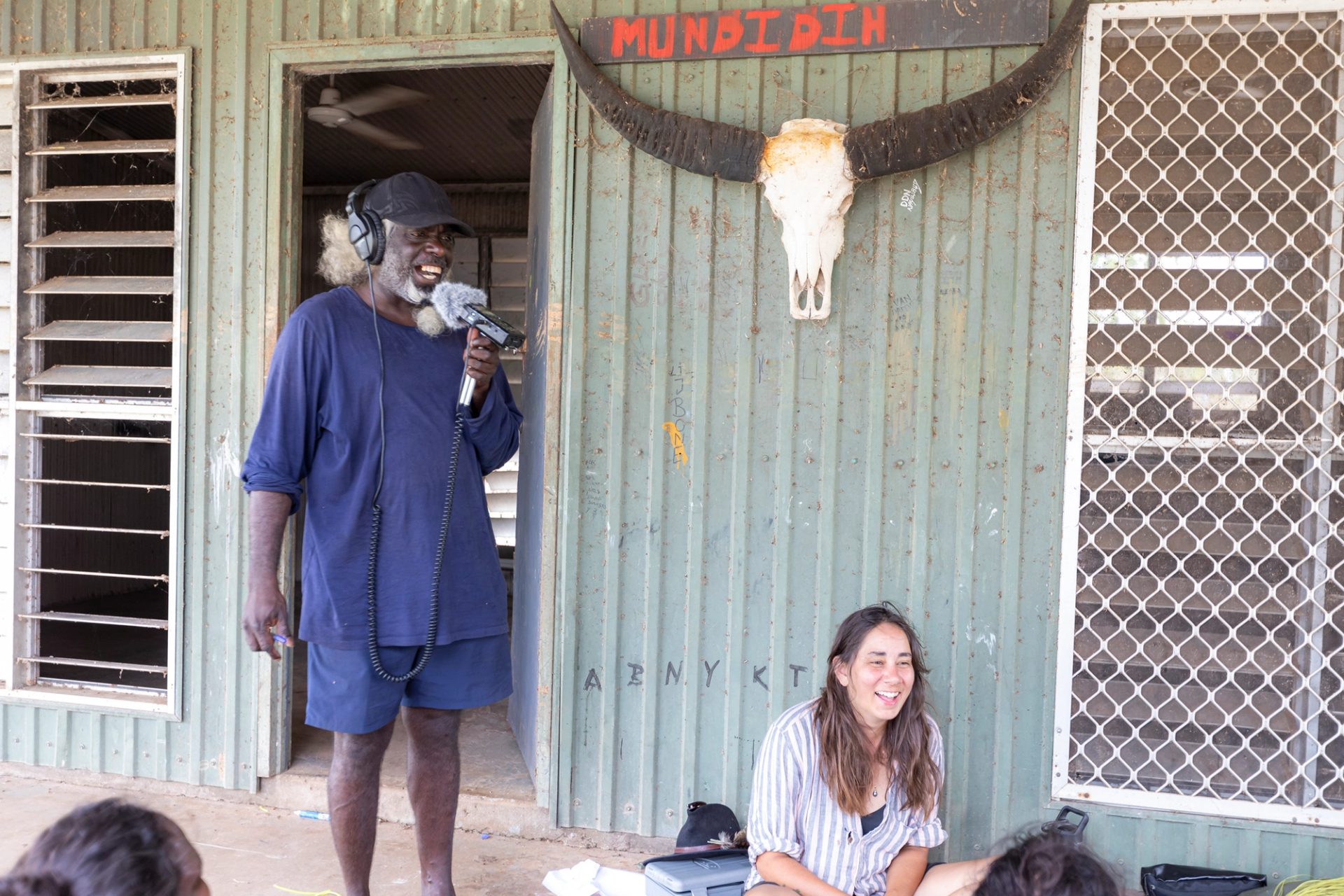
The rangers and their environmental programs clearly work like a well-oiled machine. There were signs all over the building made by the team with images of animals they care for, info on the seasons or types of traps. There were fire management schedules stuck up above the kettle. The head rangers introduced themselves and told me about where I was, what they are doing, the programs they run and how they run them. They all got in on our presentation about the exhibition space back in Sydney and enjoyed looking at everyone else’s projects. It was a very warm welcoming group of people, and they were all invested in what the sisters and their mother were making. Parts of the work and materials appeared on the back of utes, with rangers carrying the big heavy pots full of the precious pink berry that would be used to dip dye the pandanus fibres. Smiling wide and happy to help, a young tall man walked past me, pot in hand and asked Rosemary where she would like him to set it down.
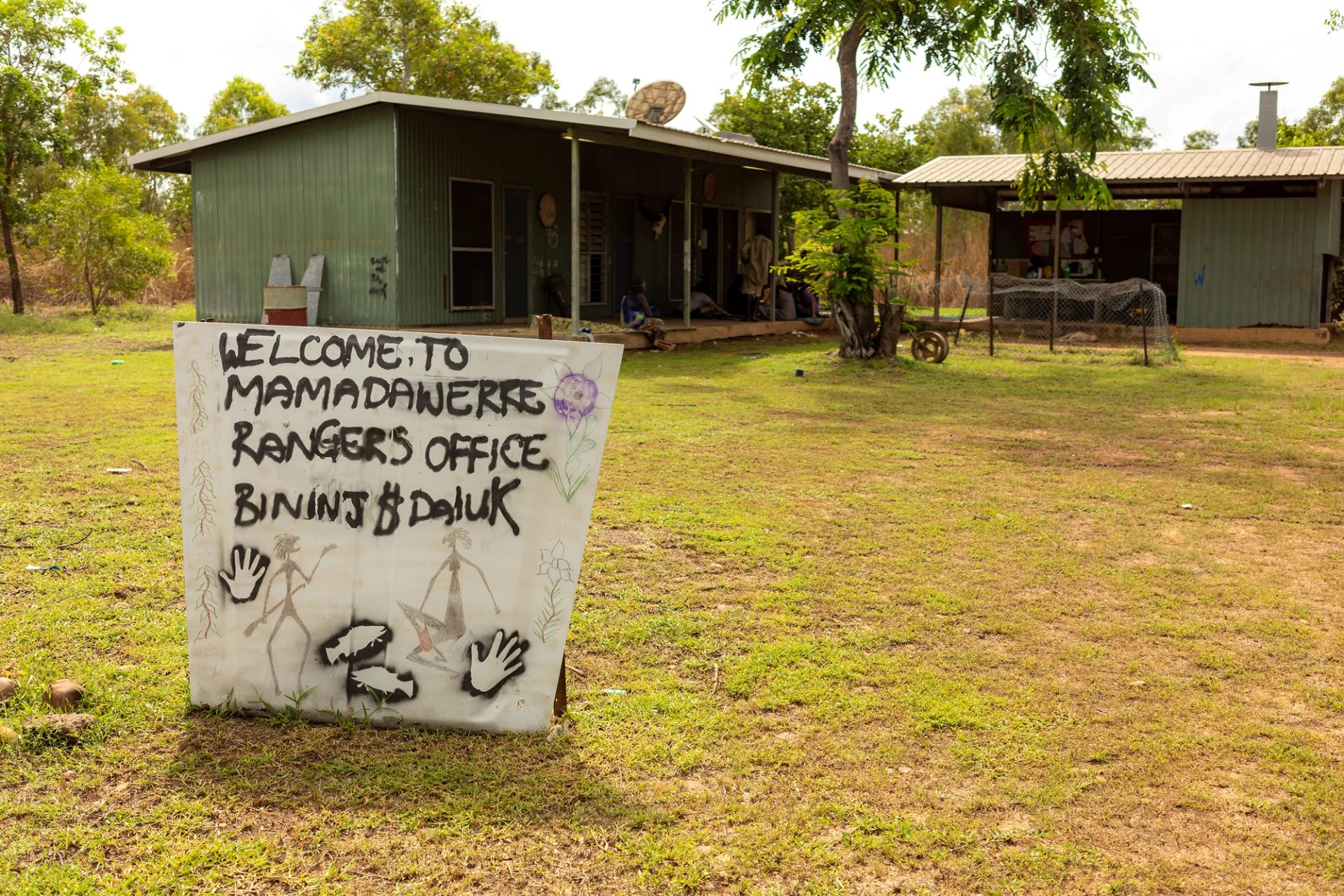
The Nabulwad sisters were fantastic. Rosemary had a way about her. She was not shy and spoke to me as if I was someone she had taught in school as a small one and was still trying to keep me engaged all these years later. She was a great storyteller, maintaining my attention with carefully chosen pauses, glances and the occasional smile when she knew she had pinned an idea, thought, concept to my consciousness. The penny dropped in my head and her smile would catch it. She told me the stories of the marebu. The different patterns, weaves, stitches. She told me the story of her mother Janice Nabulwad starting the marebu and carting it to hospitals, on planes, to meetings and work. That marebu went everywhere with those women. Rosemary has several jobs in her community and showed off all her skills. She was applying for a Churchill Fellowship while we were there. It was about the damage that is done by the constant cycle of staff in and out of jobs out bush. They don’t get the correct preparation and understanding of what life is like out there and usually, by the time they have figured it out and it’s working between them and the locals, they burn out, move on, go home and the community has to start over again. People come in and have their big grand ideas and then, when they figure out that’s not what the people they work for want, that causes a pause. People close off to ideas brought in by a visitor who hasn’t taken the opportunity to listen to what is already there. It must be exhausting for everyone involved. So, Rosemary and Katie are going to do something about it, and she wants to share her findings with communities that go through the same issues.

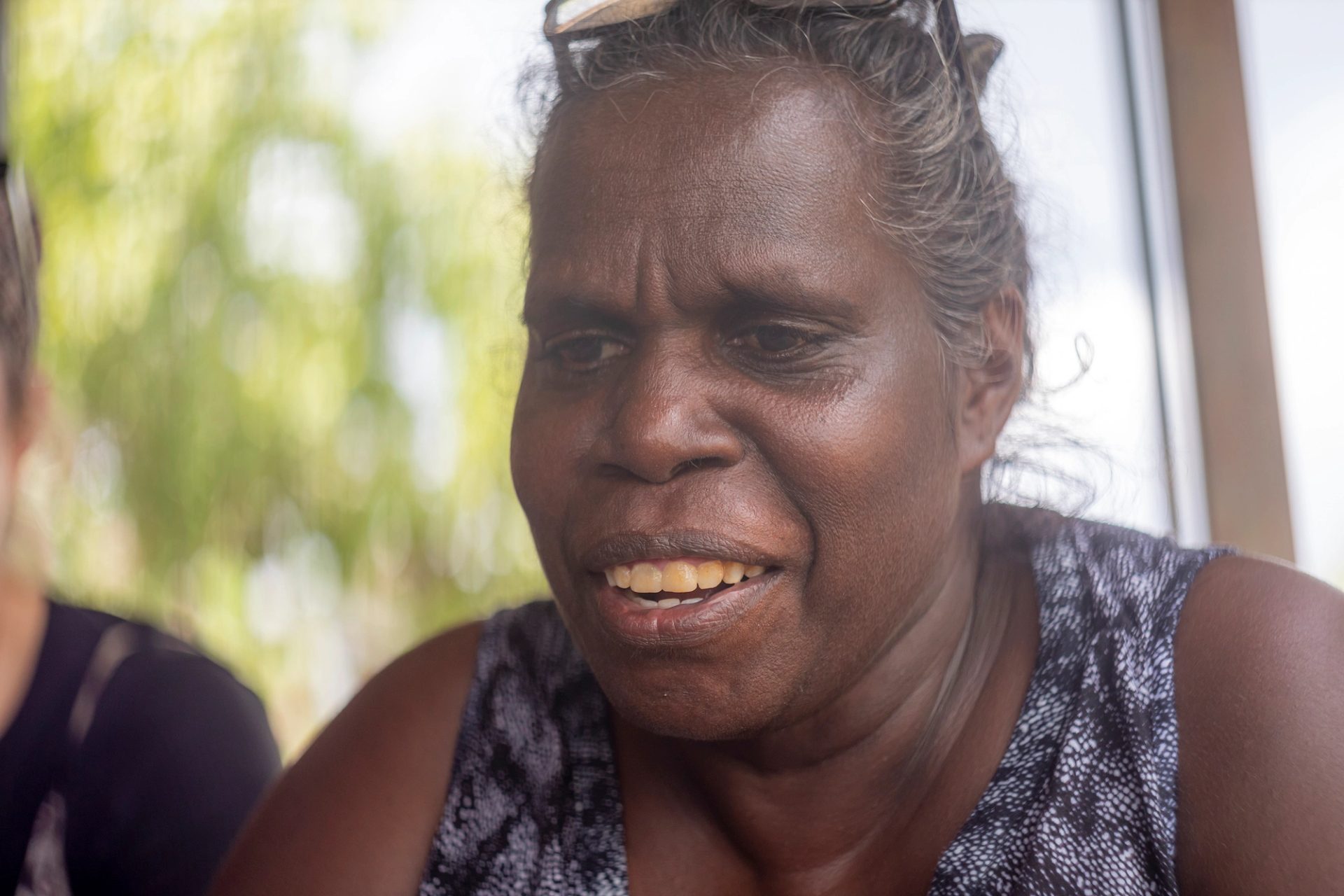
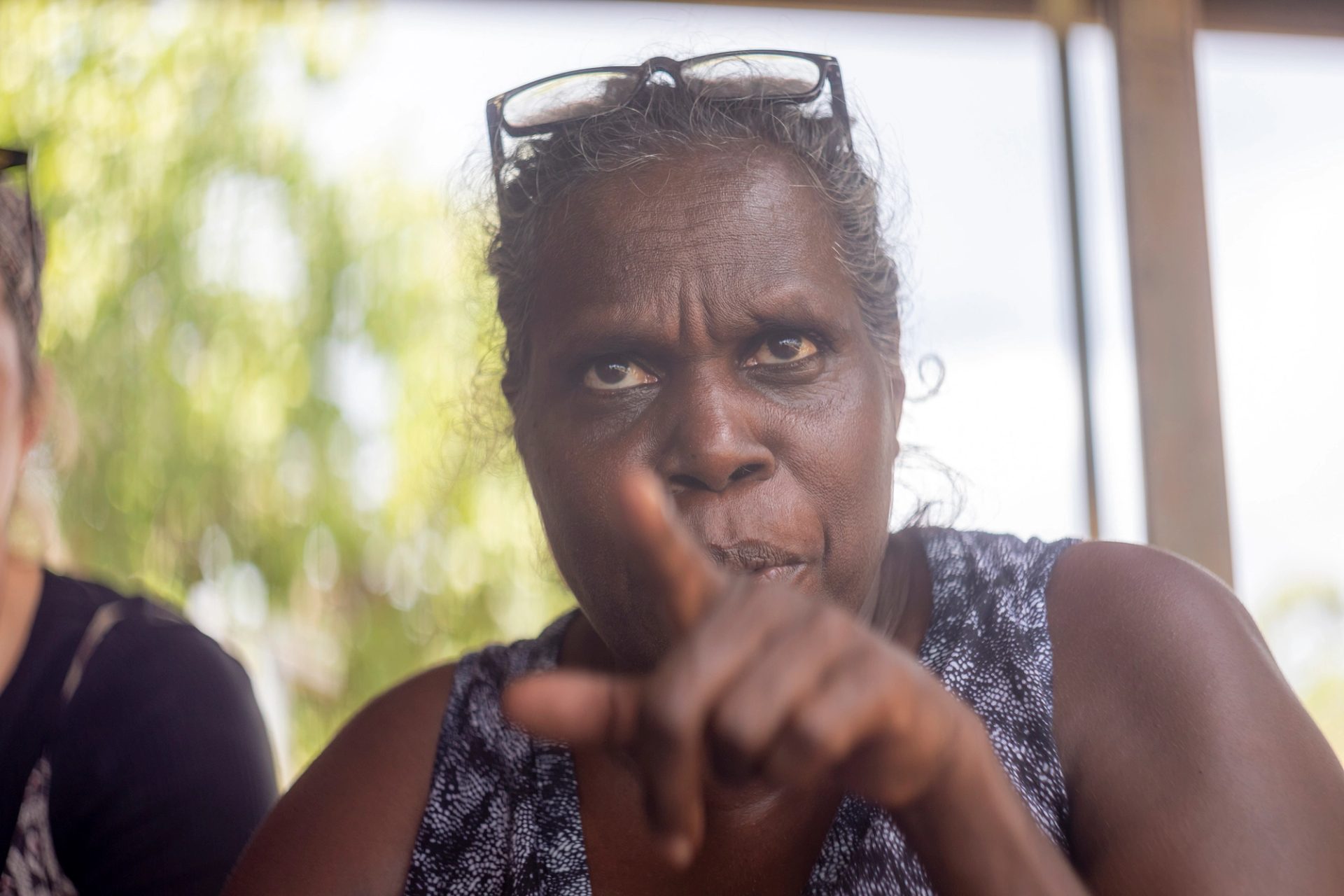
Rosemary told me lots of stories. The lonely boy story is the story of that Country. That was a sad story of an orphaned little boy whose tears flooded the area. It’s a longer story than that, with more detail. I remember the detail. Rosemary could tell you that story though, not me. She told me about the river just behind where we sat together – it went all the way to where I was with Margaret Rarru Garrawurra over at Laŋarra. She described how her family and the family of Durrmu artist Regina Pilawuk Wilson are very close, said that Regina will be on her way to do a residency with some of the other weavers. We sat on the pink marebu and she talked as she wove, glasses perched on the edge of her nose, one leg out for balance. In between stories Rosemary would get up to tend to the pot of colour on the fire. Or she’d call to one of her sisters in language and they’d get up, turn the pandanus over in the pot and check the colour. Occasionally one of them would disappear around the corner to hang the finished dyed pieces up on the washing line to dry out, only to return back to the marebu.
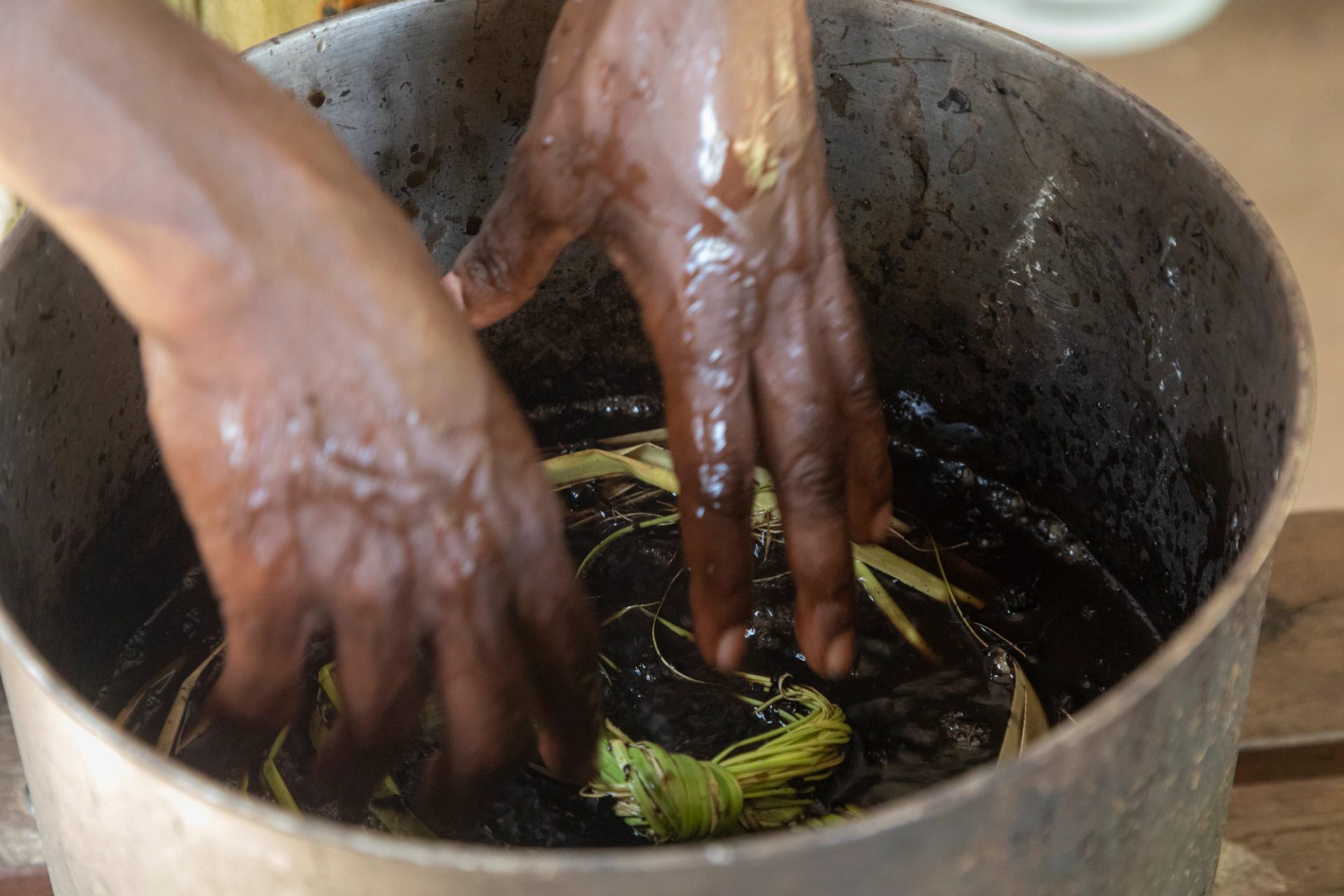
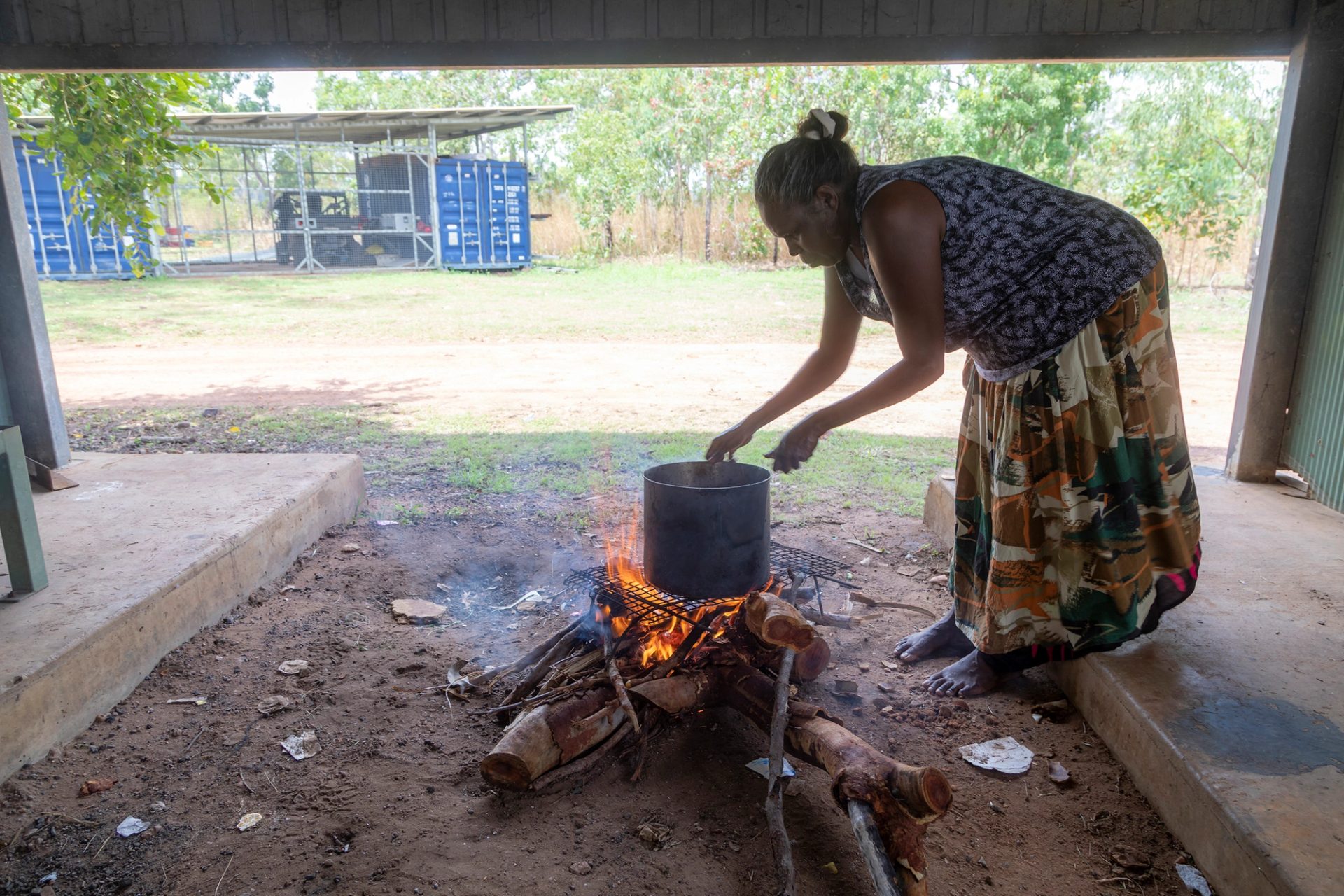
The berry that creates the pink for this work comes from a family member. The ladies didn’t go out and get this amount themselves. Their local source is too dangerous to get to. There are three or four rivers to cross, it takes all day to get there, and they have to return at night. The last time they did that trip was around five years ago. So, instead Katie had helped save them the trip. She’d done a call out for the berry and found large amounts for them to cook up. Tim got his drone out to take some shots over the billabong, after asking permission first, of course. Every man and boy in the community ended up gathered around him, watching his screen as the drone showed them a different way to look at their Country. Tim sent it all the way to the waterfalls and back, over croc-infested waterways, dodging eagles as they swooped the intruder in their skies.
That afternoon I was tired and had a little lay-down for an hour or so with Katie and Miriam while Tim went walking with his cameras. I heard a gunshot while I was resting in my swag. Loud, so not too far away. I went back to listening to the fan above swiveling in its socket, the birdsong in between the deep rumbling of dark clouds. I hoped it would rain. Tim arrived back to camp and filled us in. A buffalo was running through the community so the rangers had to take a shot at him. Tim tried to help them track it, but it ran across the landing strip and over the other side. The drone couldn’t find it. The rangers were on board with our project and understood what we were there for. And on the day of filming, they had a burn off right next to our workspace. This created the backdrop for amazing images of an amazing time. Young men and women who had been walking around in community suddenly appeared in their ranger uniforms, were given backpack blower machines and went for it! I watched several of the men disappear into the bush and come back out seconds later with big flames following them. The backpack-blower-machine team then swung into action, directing the fire from a safe distance. The older men were teaching the younger ones. ‘Be careful, if you blow it that way with this wind, you will be burning yourself! Go the other way and watch it move, can you see? Push it up, gentle.’
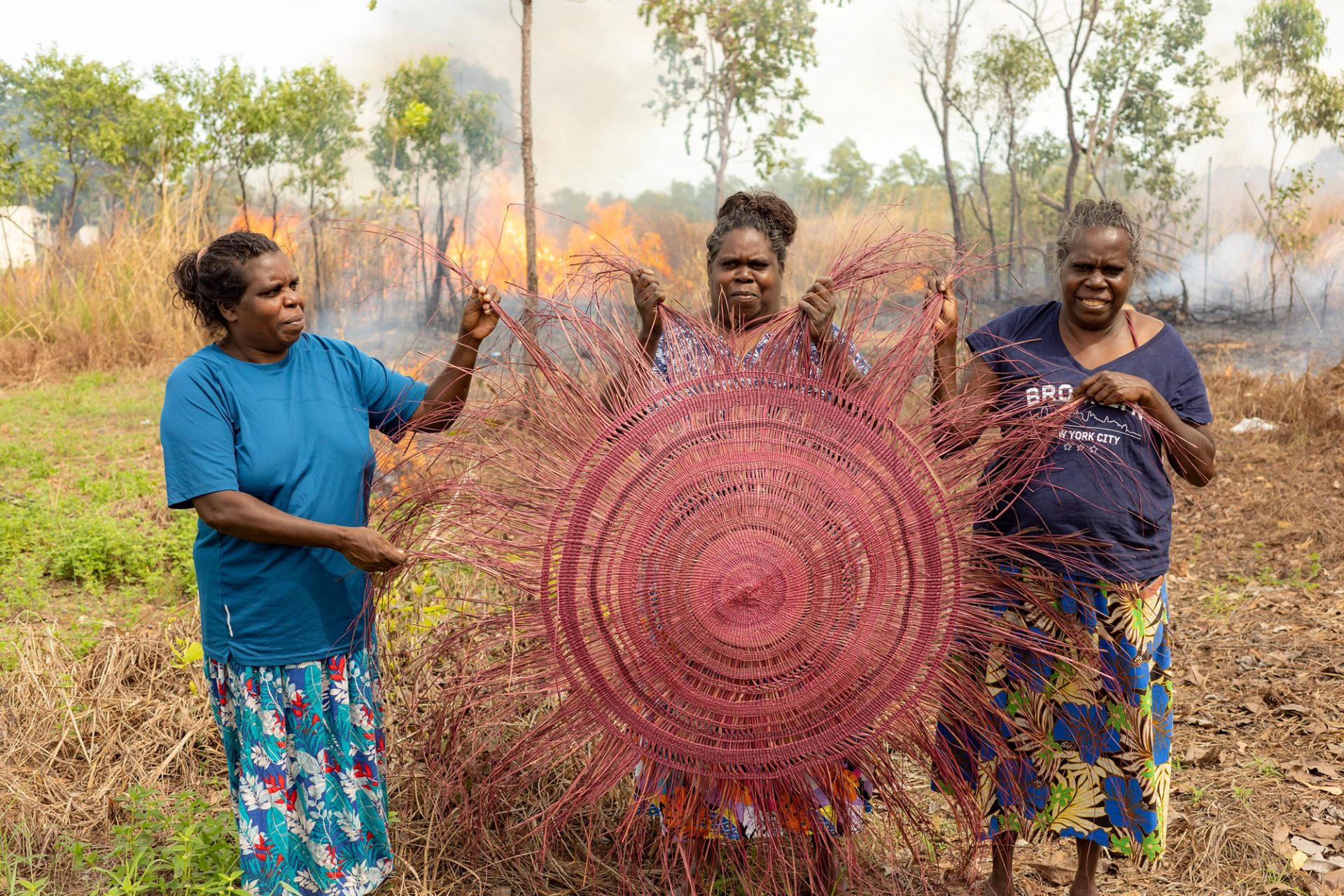
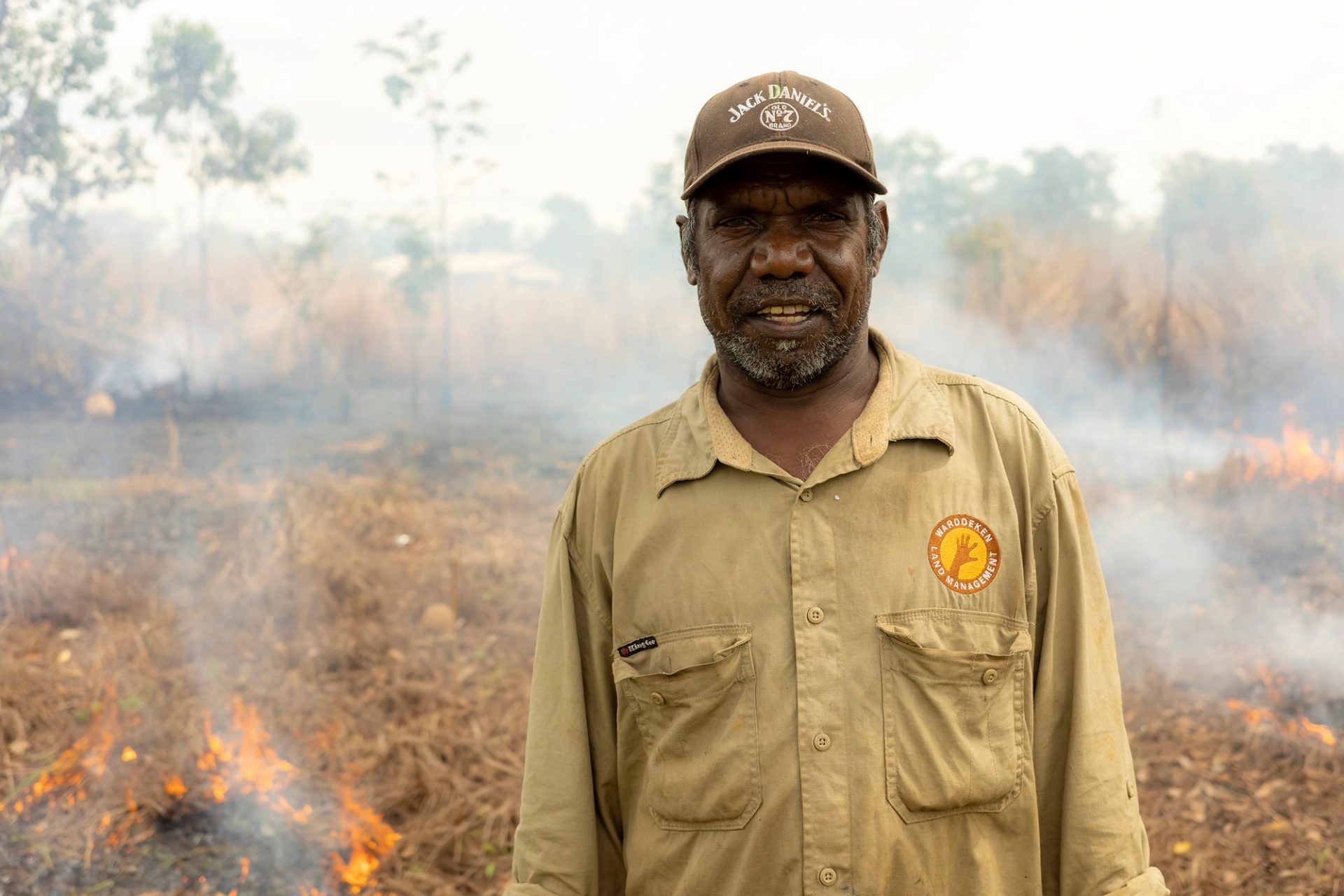
After the filming we left Mamadwerre and headed back to Jabiru. The next day Katie drove us to Darwin. I laid down in the back of the troopie, hat over my head. I peeped through the small holes in my hat at the passing trees and sky. I asked Katie if she would mind making a stop in Darwin for me. I had an engagement ring to pick up. Designed by a family friend, I had spent a matter of months working with him on this special ring. We swung into his place and I was sweating. Tim, Miriam and Katie waited in the car. I got the ring and Katie dropped us off at the airport in good time for our flights home. Tim, Miriam and I had a stopover in Brisbane. Over a goodbye beer Tim tried to convince me to make my partner dinner or something that weekend and pop the question. As they flew home together to Melbourne, Miriam told Tim that she thought I would pop the question before they had even landed. I made it through my front door in Sydney and got down on one knee to propose. Still in the yawk yawk T-shirt I bought that day at the art centre with samples of the pink pandanus in the pocket of my jeans, the necklace Conrad made me, and red dirt on my boots and hat. She said yes.
Contributing Artists
Rosemary Nabulwad
Kunwinjku
Ada Nabulwad
Kunwinjku
Lorna Nabulwad
Kunwinjku
Janice Nabulwad
Kunwinjku


















